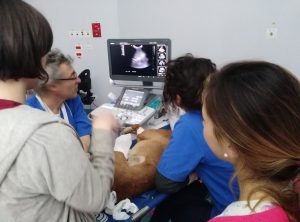Incidental and non-incidental canine thyroid tumors assessed by multidetector-row computed tomography: a single-centre cross sectional study in 4520 dogs
Bertolini G, Drigo M, Angeloni L, Caldin M.
Incidental and non-incidental canine thyroid tumors assessed by multidetector-row computed tomography: a single-centre cross sectional study in 4520 dogs
Chiedi l’articolo intero all’autore
Abstract
Thyroid nodules are common in dogs and are increasingly likely to be detected, with the increased use of imaging modalities. An unsuspected, non-palpable, asymptomatic lesion, defined as a thyroid incidentaloma, may be discovered on an imaging study unrelated to the thyroid gland. The objective of this single-center cross-sectional study was to assess the prevalence and computed tomography (CT) characteristics of incidental and non-incidental thyroid tumors in a large population of dogs, using prospective recruitment of patients undergoing CT examination for various reasons during the period 2005–2015. Unilateral or bilateral thyroid masses were detected in 96/4520 dogs (prevalence, 2.12%; 95% confidence interval [CI], 1.70–2.54%). Seventy-nine (82.3%) lesions were malignant and 17 (17.7%) were benign. Masses were discovered incidentally in 34/96 dogs (overall prevalence of incidentaloma, 0.76%; 95% CI, 0.51–1.02), and 24 (70.6%) of these 34 masses were thyroid carcinomas. Among the CT variables assessed, mineralization, vascular invasion, and tissue invasion were detected only in malignant tumors. Intratumoral vascularization was significantly associated with the presence of thyroid malignancy (P < 0.001). Although incidental thyroid nodules in dogs are relatively rare, they are often malignant. The data suggest that the neck should be thoroughly assessed in middle-aged and old patients undergoing body CT for various reasons. Thyroid nodules detected incidentally on CT should be sampled to avoid missing thyroid cancer.






 Il Direttore Sanitario Dott. Marco Caldin
Il Direttore Sanitario Dott. Marco Caldin